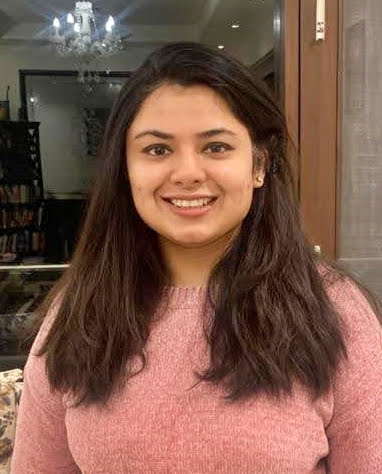Magic Loop all the way!
Today I am going to teach you a new and extremely versatile method of knitting in the round which gives you the freedom to use circular needles using a chord of any length (in fact the longer the better). This method is called Magic Loop. This is a great alternative to Double Pointed Needles (DPNs) and once you get the hang of it, you’ll never want to use DPNs again for knitting in the round – I know I never do. It also saves you from having to buy chords of different lengths since any chord length works for this. You’ll find a lot of sock and cap patterns with this method so do try your hand at this.
You start by basically casting on an even number of stitches on your circular needle by using any type of cast-on of your choice. For this demonstration, I have cast on 20 stitches using the long-tail cast-on. Next, you shift all the stitches to the middle of your chord.


Divide the number of stitches on the chord by half and put a place marker or a rubber band or a safety pin there to mark the spot. Then you pinch the cord at the halfway mark using your thumb and forefinger and pull the chord out. The effect of doing this is that an equal number of stitches (i.e. 10 stitches for me) will shift on both sides of the circular needle like below

One side of the circular needle will now have the stitches which include the stitch attached to the ball of yarn – this is the last stitch of the round. While keeping these stitches on the chord, slip the first half of the stitches to the needle in front of the chord. This means that while one of your needles will have half of your stitches, the other half of the stitches will be on the chord, which also means that the second needle will be free and can be used for knitting. Use the free needle to knit the first stitch on the needle. If you pay attention, you will notice that in knitting this way the stitch attached to the ball of yarn (i.e. the last stitch of the round) will come very close to the first stitch of the round which you are about to knit. Keep the yarn tight and knit the first stitch. All the principles of joining in the round will apply here. To refresh your memory on how to join in the round, check out my post here.



Please note that some gap may be left between the first stitch and the last stitch of the round, but don’t worry about it – we will tighten it up in Round 2. Knit the remaining stitches (i.e. 9 stitches in my case) left on the needle to complete the first half of the round.

Now you have to do the same thing for the remaining half of the stitches. This time shift the stitches you have just knitted on the chord while shifting the remaining half of the stitches (still to be knitted) onto the needle. Use the free needle to knit the remaining stitches while maintaining the tension in the yarn. The first round of your circular knitting is now complete.

Now we come to Round 2 – special attention needs to be paid when starting this round to ensure that no gap remains at the beginning of the round. You can remove the gap left over from the previous round by holding your yarn tight while knitting the first stitch of Round 2. If you look below, I have knit three stitches of round 2 and not much gap is left at the beginning of the round.

Continue knitting the remaining rounds, pulling on and pushing off the stitches from the needle to the chord while knitting the rounds. After 2-3 rounds, a sort of tube would start forming. Have a look

This is all there is to the Magic Loop method of circular knitting. It may seem a little daunting at first but it can be a very useful technique in your bag of tricks since you can use this method to knit a circle/tube/round of any circumference and any length.
In case you find something confusing or get stuck somewhere, feel free to write to me.
Now people, go forth and spread the magic!!
~P
P.S. Some of you have asked me to put up videos instead of pictures of my tutorials. I am trying my hand at them and as soon as I feel I have something worthwhile, I’ll share them with all of you. Till then, please bear with my pictures.

